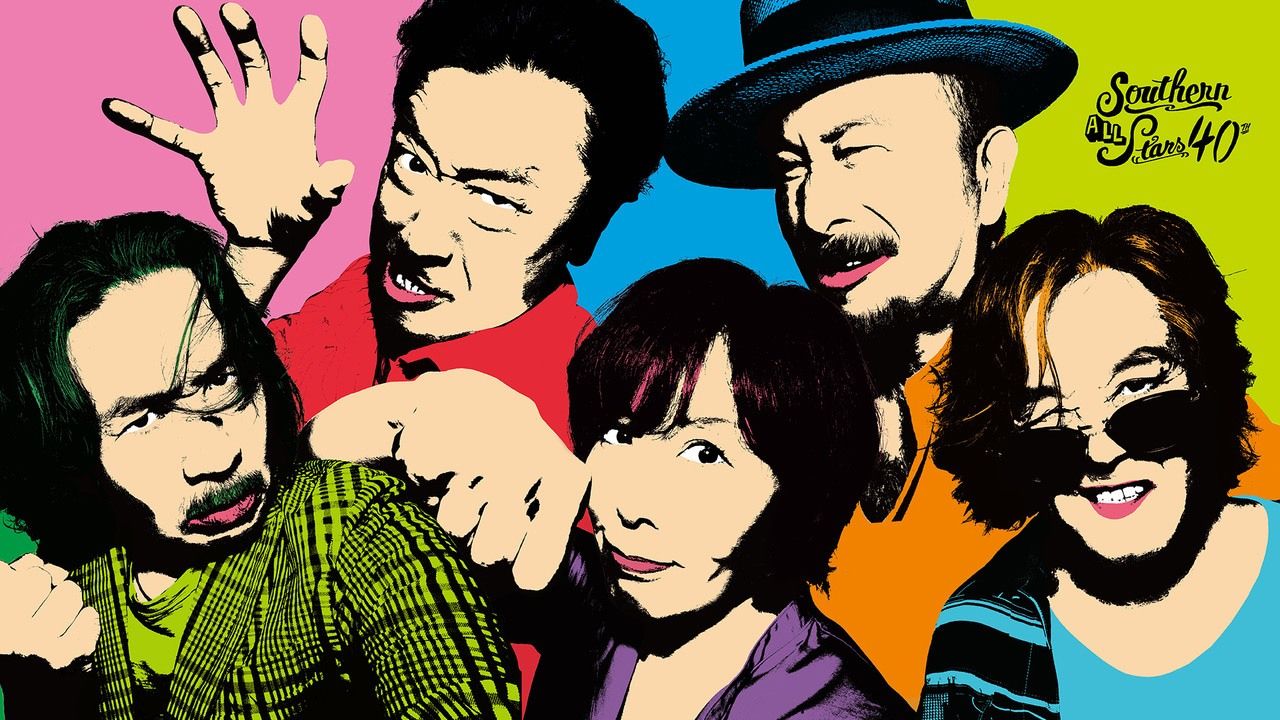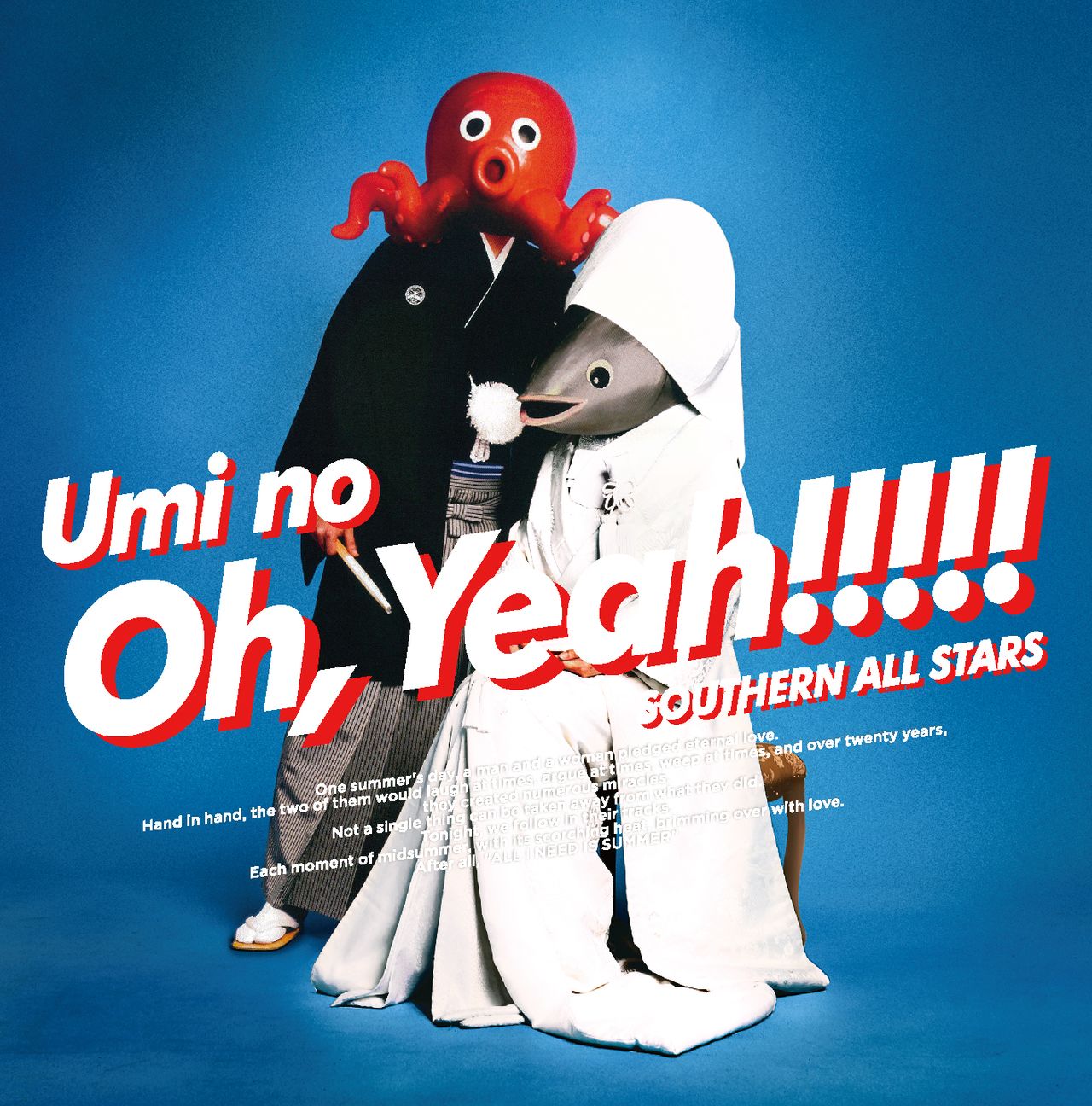
The Southern All Stars: A Beloved National Band
Culture Music- English
- 日本語
- 简体字
- 繁體字
- Français
- Español
- العربية
- Русский
The Southern All Stars wrapped up the 2018 NHK Kōhaku uta gassen year-end television songfest, the last of the Heisei era, with a rousing performance of their most-well known songs including “Kibō no wadachi” (Tire Tracks of Hope) and “Katte ni Shindobaddo” (Willfully Sindbad). It is an honor to be chosen to perform at the very end of Japan’s highest-rated television program and annual national event, and the Southern All Stars certainly deserved it. No other Japanese band has so consistently put out so many hits or kept their leading position in the Japanese music world over a career of four decades.
The band debuted in 1978. Since then they have released major hits and music tailored to each decade thereafter, from the 1970s right up through the current decade of the 2010s. There have been interludes along the way as some band members worked solo and other projects interceded, but their popularity has never waned, and they are now into their third generation of fans. Such has been their sustained popularity among Japanese of all ages that they are often referred to today as Japan’s “national band.”
Unchanged Over Four Decades
Why is it that the Japanese people find the Southern All Stars so endearing? For one thing, despite their incredible popularity they have never become aloof or distanced themselves from the ordinary Japanese people. The band started as a student music club at Aoyama Gakuin University in downtown Tokyo’s Shibuya, and they have never lost that student ambience, conversing and joking among themselves just as they did in their university days so long ago.
They call themselves the “All Stars,” but clearly they don’t act like stars. Even after 40 years, they retain the artless innocence of amateurs in the midst of professionals. That description only extends to their personalities, however. The quality of their music and live performances is top class.
This is why the band remains a close and familiar entity to its fans. The Southern All Stars are not glittering, distant stars. They share with their fans the same goals and walk with them on the same musical journey.
A “Mixed Juice” of Rhythm and Tranquility
Musical genres ranging from rock and blues to soul, Latin, folk, reggae, funk, electronics, and ambient converge in the eclectic music of the Southern All Stars. This is a feature shared with many Japanese bands, but none have so gleefully explored the world of music or so successfully adapted diverse genres to their own unique style.
Allow us to diverge here for a moment to explain the genre of Japanese pop music known as kayōkyoku. In a country like the United States, the popular music scene comprises equal parts of jazz, country, blues, and Latin, which all have different roots. In Japan, however, with the exception of small enclaves of maniacal fans, pop music has only one component: kayōkyoku, a “mixed juice” of traditional Japanese folk music blended with foreign musical elements that have been introduced into Japan since the Meiji era (1868–1912).
In every decade of their existence, the Southern All Stars have managed repeatedly to produce an appealing “mixed juice” of music that is both invigorating and soothing. The band’s lead vocalist and songwriter, Kuwata Keisuke, has always managed to add a fresh flavor to the band’s songs, keeping to important themes while also anticipating the times. Sometimes the flavors he promotes are a bit too spicy, bringing a tight tingling feeling to the throat, but that kind of willingness to experiment is part of Kuwata’s strong appeal.
Melody Over Lyrics
A convenient way to trace the band’s 40-year history is to listen to their two compilation albums: Umi no Yeah! covering the first two decades and Umi no Oh, Yeah! covering the third and fourth. Each of these is a box set of two CDs. The first song you should get to know is “Katte ni Shindobaddo,” the Southern All Stars’ debut track. A combination of rock and roll and samba, the tune is well-known to all Japanese and well-liked, but few know the lyrics.
Vocalist Kuwata, who wrote the band’s tunes and lyrics, grew up in the city of Chigasaki in Kanagawa Prefecture. The lyrics of “Shindobaddo” trace Kuwata’s way home through the well-known Kamakura tourist island Enoshima to Chigasaki. Interestingly enough, the “hook” or chorus of the song is the seemingly meaningless phrase, “What time is it now? Yeah, more or less.” The response doesn’t answer the question, but the odd construction was the product of Kuwata’s writing process. Kuwata started out writing the melody with the intent of applying lyrics in English, but later switched to Japanese. The sounds of the words were more important to Kuwata than their actual meaning and it didn’t bother him if they made no sense. He was probably the first in Japan to be so daring with his lyrics.
Why did this song become so popular? Because the Japanese had already acquired a taste for foreign rock and pop music, enjoying the sound of the words even though they didn’t understand their meaning. They might not grasp the meaning of the lyrics, but their hearts were moved by the pulsating rhythm of the music. Kuwata understood this about the Japanese and applied it to his own music composition.
If the Southern All Stars’ music appeals to a native Japanese audience in this way it should appeal as well to listeners in other countries. The first of the two compilation albums, Umi no Yeah! especially, is replete with tracks that should be a pleasure to listen to for those who enjoy rhythm and melody over lyrics.
Giving Voice to the Beauty of the Japanese Language
The second album of music from the band’s latter 20 years, Umi no Oh, Yeah! is quite different. Here we find Kuwata directing his attention to the beautiful sounds and subtle nuances of the Japanese language and incorporating them into his lyrics and melodies.

Jacket for the album Umi no Oh, Yeah! covering the Southern All Stars’ latter 20 years.
The opening track on the album is “Tsunami,” a lyrical ode to the bittersweet memories of love by a man approaching middle age. The song is rendered with careful emphasis on each word, in contrast to Kuwata’s earlier works in which sound and rhythm took precedence over meaning.
Songs with messages also increase during this time in the band’s development, but the messages are low-key and meant to appeal to ordinary folks. The lyrics to “Peace and Hi-lite” (a play on the names of two popular Japanese cigarette brands) convey a message of peace and the futility of war. Umi no Oh, Yeah! is the kind of album you should listen to while reading through the lyrics.
I cannot recommend Southern All Stars highly enough and urge music fans in other countries to listen to their music. The band’s repertoire includes songs with lyrics in English and Spanish, which should, of course, capture the attention of a foreign audience. But the band’s greatest attraction is the grassroots appeal of its full range of works. These original compositions invite the listener into a fantastic universe of music. Probably no other band in the world offers such a unique and stimulating experience. The Southern All Stars launched an all-Japan tour on March 30, 2019. This is a group well worth keeping your eyes on as they gallop their way to an unseen horizon.
(Banner photo: A fortieth-anniversary illustration of the Southern All Stars band members. Photo courtesy of Speedstar Records.)